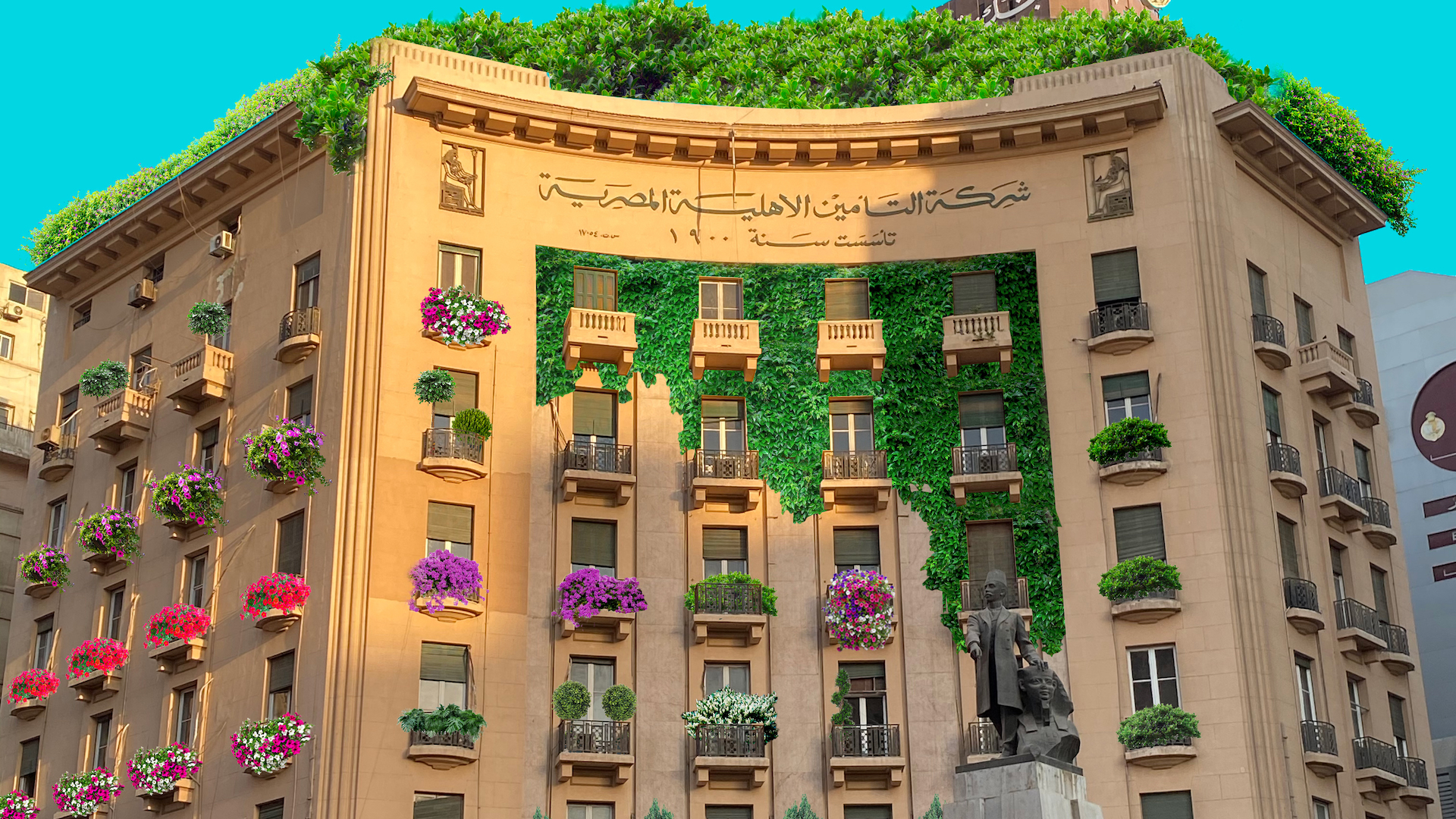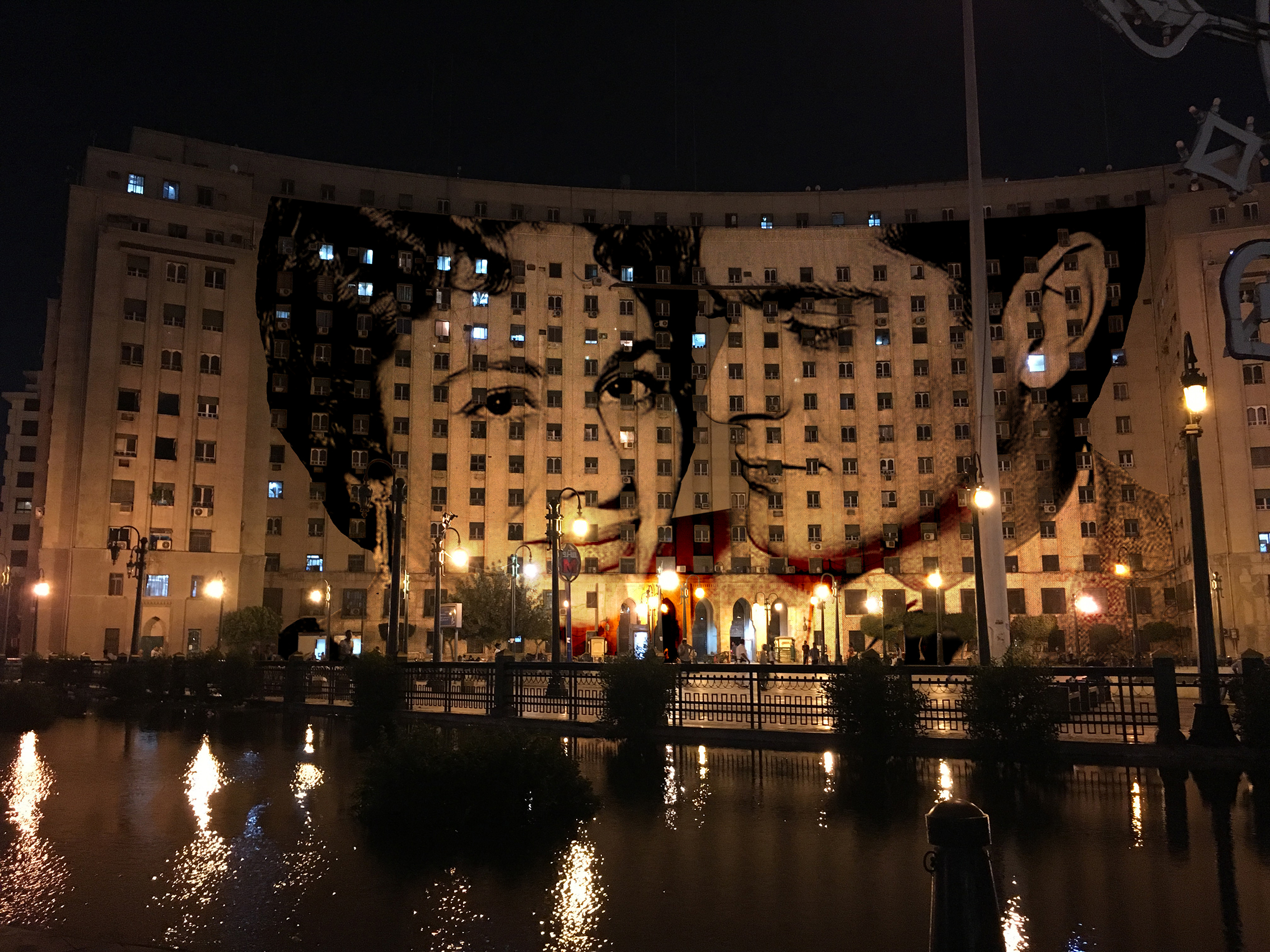
Italian native Carmine Cartolano came to Egypt over 20 years ago. He’d never intended to stay, nor had he intended to become a multimedia artist, but as fate would have it, the chaotic and vibrant nature of the North African country awoke something in him – and thus Qarm Qart was born. “In the beginning, the first six years, I was always planning to leave,” Carmine tells GRAZIA. “But you’re so drawn to it [Egypt], that you don’t know how to leave. I always say there is a kind of magic in Egypt.”

Carmine, who initially came to Cairo to immerse himself in the Arabic language, ended up translating a number of works, writing two books in Arabic, and in many ways painting the future he hopes to see in the metropolitan city on the walls of its buildings. One of his recent projects, Flowers I spread, sees the artist take to photoshop to immortalise visions of the Cairo he longs to see; one bursting with colours, and rows of flowers adorning the facades of buildings, many of which date back to the 19th century. Intended to encourage a global sustainable movement within the city, Flowers I spread – which was conceived in August of 2020 – went viral during the pandemic. In the series, buildings from downtown Cairo, a district within the city that was erected in the spirit of Paris in the 1800s, are depicted with flowers teeming with a kaleidoscope of colours reminiscent of spring in full bloom. At first glance, the pictures in the series seem to be the reality of Cairo’s buildings, but Carmine emphasis that “I wanted to say, this is photoshopped, it’s not real but it can be done and we can make it [happen].”
This is not the first project in which the Italian native uses Cairo’s buildings as the canvas for his art. Graffiti Manifesto, which garnered national attention, saw the multimedia artist photoshop celebrities from Egypt’s golden era onto iconic buildings around the city. He tells GRAZIA that “The golden-era actors were loved by everybody – I mean Soad Hosny is loved by everybody. And I was thinking lately about social media [with respect to celebrities], and if I follow Ahmed Mekky [for example] I’d know everything about him, where he eats, where he sleeps and so on. They become more human, closer to us. I prefer the idea of an artist I know nothing about.”

Carmine’s art speaks volumes about Egypt’s golden age of cinema, which stretched over the 1940s, ‘50s and ‘60s, and was considered, at the time, a creative force to be reckoned with in the Middle East. For Carmine, art is more than simply a statement or a longing for a revival of the quintessentially Egyptian elements that made and continue to make the city alive with a form of magical je ne sais quoi. “Art is a way to survive. Without beauty, without colours, we are all the same,” continues Carmine when asked about the power of art in a world that has been heavy with anxiety, fatigue and pain during the pandemic.
Flowers I spread was conceived in the first phases of the pandemic. It is no coincidence that the art scene continued to thrive during one of the most turbulent years in modern history. As Carmine so eloquently puts it, “People are so enclosed that they need a way out, and art, colours, are the way out.”
Explore Carmine’s work on his Instagram here.
Photos: Supplied








